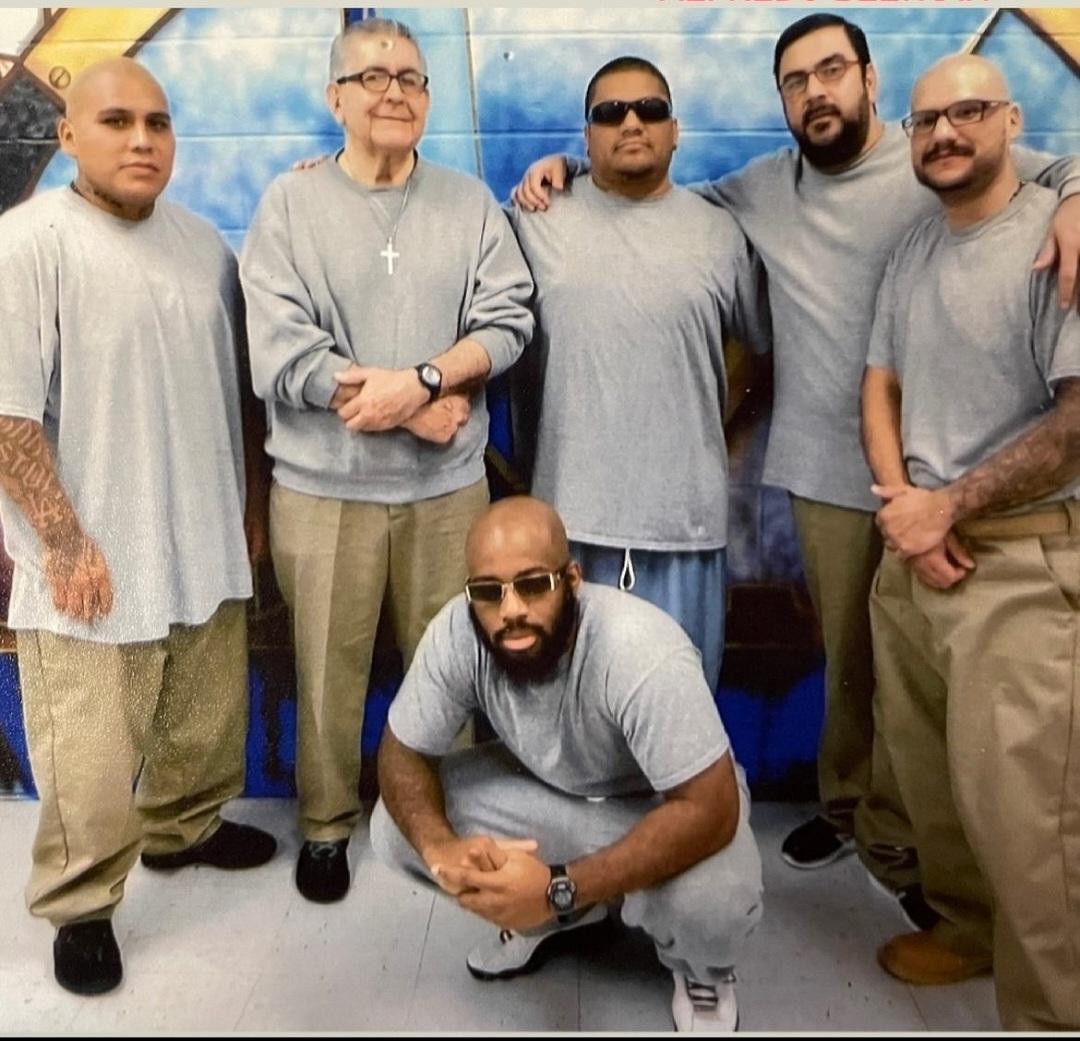The Mischaracterization Of Mentally Ill Killers: Why The "Monster" Narrative Fails

Table of Contents
The Media's Role in Perpetuating the "Monster" Narrative
Sensationalism and the Pursuit of Ratings
The media landscape, unfortunately, thrives on sensationalism. Clickbait headlines, dramatic visuals, and emotionally charged language are prioritized over factual accuracy and nuanced reporting, especially when covering violent crimes potentially linked to mental illness. This pursuit of ratings often leads to a skewed and misleading portrayal of mentally ill individuals.
- Examples of Sensationalist Headlines: "Madman on the Loose," "Deranged Killer Terrorizes Town," "Mentally Ill Patient Commits Horrific Crime." These headlines instantly create an image of a dangerous, unpredictable "monster."
- The Impact of Visual Representations: Close-up shots of a suspect's menacing face or images emphasizing their perceived "strangeness" reinforce pre-existing stereotypes and fear.
- Emotionally Charged Language: The use of words like "maniac," "insane," and "lunatic" not only lacks journalistic integrity but also fuels public misconceptions about mental illness.
The Lack of Context and Understanding of Mental Illness
Beyond sensationalism, the media frequently fails to provide adequate context or understanding of mental illness. Complex conditions are often oversimplified, crucial details about the individual's history and circumstances are omitted, and the relationship between mental illness and violence is grossly misrepresented.
- Misrepresentation of Specific Disorders: A diagnosis of schizophrenia, for instance, is often portrayed as inherently linked to violence, disregarding the vast majority of individuals with schizophrenia who pose no threat to others.
- Omission of Crucial Details: Factors such as childhood trauma, social isolation, substance abuse, and access to weapons are frequently ignored, creating a simplified narrative that blames mental illness alone.
- Oversimplification of Complex Issues: The complexities of mental health are reduced to simplistic explanations, leaving the public with a distorted and fear-inducing understanding.
The Statistical Reality: Mental Illness and Violence
Debunking the Myth of Increased Violence
Contrary to popular belief fueled by media portrayals, individuals with mental illness are far more likely to be victims of violence than perpetrators. Studies consistently show that the rate of violence committed by individuals with mental illness is not significantly higher than the general population.
- Relevant Studies and Statistics: Numerous epidemiological studies have debunked the myth of a direct correlation between mental illness and increased violence. (Cite specific studies and statistics here).
- Differentiating Mental Illness Types: It's crucial to understand that not all mental illnesses are associated with violence. The relationship, if any, varies significantly depending on the specific disorder and other contributing factors.
- Responsible Data Interpretation: Misinterpreting or selectively using statistical data can lead to false conclusions and perpetuate harmful stereotypes.
The Importance of Differentiating Mental Illness from Violent Behavior
Mental illness itself is not a predictor of violence. Focusing solely on the mental health aspect ignores other crucial contributing factors, such as social isolation, access to weapons, past trauma, and substance abuse. These factors, often intertwined, play a significant role in violent acts, regardless of mental health status.
- Social Isolation and Lack of Support: Individuals who feel isolated and unsupported are more prone to resorting to violence.
- Easy Access to Weapons: The availability of firearms significantly increases the risk of violence, irrespective of mental health.
- Trauma and Abuse: A history of trauma or abuse is a significant risk factor for violent behavior.
- Substance Abuse: The combined effects of mental illness and substance abuse can exacerbate violent tendencies.
The Consequences of the "Monster" Narrative
Stigma and Discrimination
The media's portrayal of mentally ill killers as "monsters" fuels negative stereotypes and contributes significantly to the pervasive stigma surrounding mental illness. This stigma prevents individuals from seeking help, impacts social inclusion, and limits employment opportunities.
- Impact on Seeking Help: Fear of judgment and discrimination deters many individuals from seeking necessary mental health care.
- Social Inclusion and Isolation: Stigma can lead to social isolation, further exacerbating mental health challenges.
- Employment Opportunities: Individuals with mental illnesses often face significant barriers to employment due to widespread prejudice.
Barriers to Treatment and Support
The "monster" narrative not only discourages individuals from seeking help but also creates barriers to treatment and support for those who need it most. It impacts families, communities, and public policy related to mental health funding and resources.
- Effects on Families and Communities: Families are often stigmatized alongside their loved ones, leading to isolation and a lack of community support.
- Impact on Public Policy and Mental Health Funding: The negative perception of mentally ill individuals can lead to inadequate funding and resource allocation for mental health services.
Conclusion: Reframing the Narrative Around Mentally Ill Killers
The "monster" narrative surrounding mentally ill individuals who commit violent acts is not only inaccurate but also profoundly damaging. It perpetuates harmful stereotypes, discourages help-seeking, and undermines efforts to address the complex issues surrounding violence. Accurate and responsible reporting is crucial, emphasizing context, nuance, and the multifactorial nature of violent behavior. We need a more compassionate and understanding approach, focusing on prevention, intervention, and support for individuals with mental illnesses. Let's fight the mischaracterization of mentally ill killers, challenge the harmful stereotypes, promote understanding of mental health issues, and demand responsible media coverage. Only through a collective effort can we break down these damaging stereotypes and create a more supportive and inclusive society for everyone.

Featured Posts
-
 Joanna Page Accuses Wynne Evans Of Trying Too Hard On Bbc Show
May 09, 2025
Joanna Page Accuses Wynne Evans Of Trying Too Hard On Bbc Show
May 09, 2025 -
 Fuqia E Psg Se 11 Shenjat E Suksesit
May 09, 2025
Fuqia E Psg Se 11 Shenjat E Suksesit
May 09, 2025 -
 Revised Palantir Stock Price Targets Following Market Rally
May 09, 2025
Revised Palantir Stock Price Targets Following Market Rally
May 09, 2025 -
 Analyzing Luis Enriques Success Psgs Ligue 1 Victory
May 09, 2025
Analyzing Luis Enriques Success Psgs Ligue 1 Victory
May 09, 2025 -
 Punjab Launches Technical Training Program For Transgender Individuals
May 09, 2025
Punjab Launches Technical Training Program For Transgender Individuals
May 09, 2025
Latest Posts
-
 How Figmas Ai Is Disrupting Adobe Word Press And Canva
May 10, 2025
How Figmas Ai Is Disrupting Adobe Word Press And Canva
May 10, 2025 -
 Apples Ai Future A Crossroads Of Innovation And Stagnation
May 10, 2025
Apples Ai Future A Crossroads Of Innovation And Stagnation
May 10, 2025 -
 Figmas New Ai Features Challenging Adobe Word Press And Canva
May 10, 2025
Figmas New Ai Features Challenging Adobe Word Press And Canva
May 10, 2025 -
 Alleged Microsoft And Asus Xbox Handheld Appears In Leaked Images
May 10, 2025
Alleged Microsoft And Asus Xbox Handheld Appears In Leaked Images
May 10, 2025 -
 The Kilmar Abrego Garcia Case A Microcosm Of Us Immigration Policy Challenges
May 10, 2025
The Kilmar Abrego Garcia Case A Microcosm Of Us Immigration Policy Challenges
May 10, 2025
